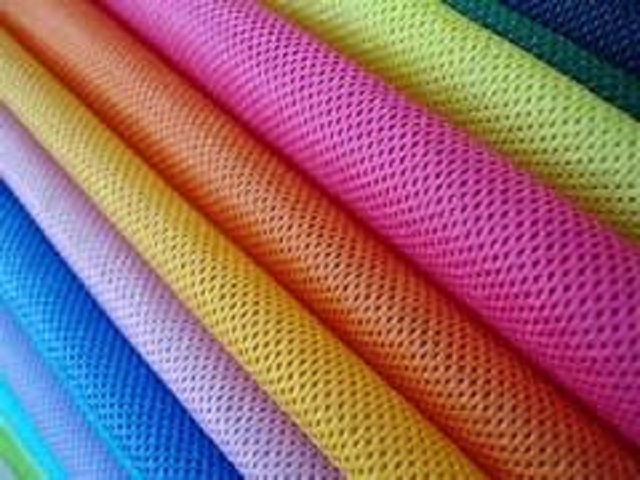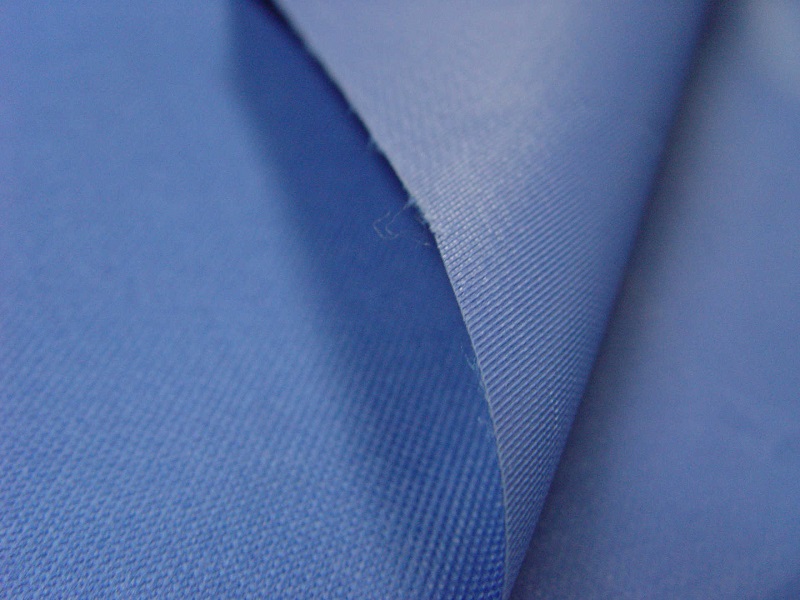Embark on a captivating journey into the diverse realm of knitted and woven fabrics. This comprehensive guide unravels the intricacies, characteristics, and applications of these two fundamental textile techniques. With a focus on their unique properties, manufacturing processes, and creative potential, you’ll gain a deeper understanding of how knitted and woven fabrics shape the world of fashion, interior design, and beyond. Whether you’re a textile enthusiast, designer, or simply curious about the magic that happens within the threads, this exploration will leave you inspired and informed.
Introduction to Knitted and Woven Fabrics
1.1 Understanding Textile Techniques
Textile techniques are the methods and processes used to create various types of fabrics. Two fundamental techniques in the world of textiles are knitting and weaving. Knitting involves interlocking loops of yarn or thread to create a fabric, while weaving involves interlacing two sets of yarns at right angles to form a cohesive cloth. These techniques have been used for centuries and have played a significant role in shaping the textile industry and the garments we wear.
1.2 The Importance of Knitted and Woven Fabrics
Knitted and woven fabrics are integral to our everyday lives. They are used in a wide range of applications, from clothing and accessories to interior design and industrial products. Understanding the unique properties and characteristics of knitted and woven fabrics allows designers, manufacturers, and consumers to make informed choices regarding the appropriate use of these textiles. These fabrics offer different aesthetics, textures, and performance attributes, making them suitable for diverse purposes.
The Art and Science of Knitted Fabrics
2.1 History and Evolution of Knitted Fabrics
Knitting has a rich history that dates back thousands of years. It is believed to have originated in the Middle East and spread across Europe and Asia. Initially, knitting was done by hand using simple tools like needles. Over time, technological advancements led to the development of knitting machines, revolutionizing the production process. Today, knitted fabrics are widely recognized for their elasticity, comfort, and versatility.
2.2 Types of Knitted Stitches and Structures
Knitted fabrics can be created using various types of stitches and structures, each resulting in unique visual effects and properties. Common stitches include the basic knit stitch, purl stitch, rib stitch, and cable stitch. Different combinations and variations of these stitches produce intricate patterns and textures. The choice of stitch and structure depends on the desired outcome and the intended use of the fabric.
2.3 Properties and Characteristics of Knitted Fabrics
Knitted fabrics possess distinct properties that make them desirable in different contexts. They are known for their stretchability, breathability, and drape. The loops in knitted fabrics allow for flexibility and ease of movement, making them suitable for garments that require freedom of motion. Additionally, knitted fabrics can be engineered to have specific properties such as moisture-wicking, thermal insulation, or compression.
2.4 Applications and Innovations in Knitted Fabrics
Knitted fabrics find extensive applications in the fashion industry, ranging from casual wear to sportswear and lingerie. They are used in the production of sweaters, dresses, socks, and more. In recent years, advancements in knitting technology have led to innovative applications, such as 3D knitting, where complex structures can be created directly on the knitting machine. This opens up possibilities for custom-fit garments, reduced waste, and increased production efficiency.
Unveiling the Wonders of Woven Fabrics
3.1 Origins and Development of Woven Fabrics
Woven fabrics have a long history that can be traced back to ancient civilizations. The art of weaving emerged independently in different parts of the world, including Egypt, Mesopotamia, China, and the Americas. Weaving techniques evolved over time, with the invention of the loom, which mechanized the process and increased production capabilities. Woven fabrics gained prominence due to their durability, stability, and versatility.
3.2 Weaving Techniques and Looms
Weaving involves interlacing two sets of yarns, known as the warp and weft, to create a fabric. Various weaving techniques exist, including plain weave, twill weave, and satin weave, each yielding different surface textures and characteristics. Looms, both traditional and modern, are used to facilitate the weaving process. Traditional handlooms require manual manipulation of the warp and weft, while modern power looms and computerized looms have automated the weaving process, increasing efficiency and precision.
3.3 Exploring Different Types of Woven Structures
Woven fabrics offer a vast array of structures and patterns. Beyond the basic weaves, complex structures like jacquard weaves and dobby weaves allow for intricate designs and motifs to be woven into the fabric. Woven structures can range from lightweight and sheer to heavy and dense, depending on the density and thickness of the yarns used. These variations in structure give woven fabrics their unique visual appeal and tactile qualities.
3.4 Properties and Versatility of Woven Fabrics
Woven fabrics boast excellent dimensional stability and strength. They are known for their ability to retain their shape, making them suitable for tailored garments and upholstery. Woven fabrics can be engineered to have specific properties such as water resistance, stain resistance, or flame retardancy through the use of specialized yarns or finishing treatments. Their versatility allows them to be used in a wide range of applications, including clothing, home furnishings, and technical textiles.
By delving into the history, techniques, properties, and applications of knitted and woven fabrics, we gain a deeper appreciation for the artistry and craftsmanship involved in textile production. Knitted fabrics offer comfort, flexibility, and innovative possibilities, while woven fabrics provide durability, structure, and a wide range of designs. Understanding the unique attributes of each technique allows designers and consumers to make informed choices based on aesthetic preferences, functionality requirements, and sustainability considerations. In the following sections, we will explore the differences between knitted and woven fabrics further, compare their properties and applications, and delve into the creative potential they offer in various industries.
Comparing Knitted and Woven Fabrics
4.1 Differences in Construction and Manufacturing
One of the key differences between knitted and woven fabrics lies in their construction and manufacturing processes. Knitted fabrics are made by interlocking loops of yarn, either by hand or using knitting machines. This method allows for greater elasticity and stretchability in the resulting fabric. On the other hand, woven fabrics are created by interlacing two sets of yarns at right angles, forming a stable and structured cloth. The weaving process can be done by hand on traditional looms or by automated machines.
4.2 Performance and Functional Variances
Knitted and woven fabrics exhibit different performance characteristics. Knitted fabrics, with their inherent stretch and flexibility, offer excellent drape and conformability to the body, making them suitable for garments that require ease of movement. They are often used in activewear, sportswear, and undergarments. Woven fabrics, with their stability and durability, provide structure and shape retention, making them ideal for tailored clothing, upholstery, and home textiles.
In terms of functional variances, knitted fabrics excel in areas such as breathability, moisture-wicking, and thermal regulation, making them suitable for active and athletic wear. Woven fabrics, on the other hand, can offer better wind resistance, water repellency, and protection from external elements when enhanced with appropriate finishes or specialized yarns.
4.3 Design Considerations and Aesthetics
Design considerations and aesthetics differ between knitted and woven fabrics. Knitted fabrics offer versatility in terms of stitch patterns, textures, and surface designs. They can be easily manipulated to create intricate patterns, colorwork, and even three-dimensional structures. Woven fabrics, with their grid-like structure, lend themselves well to traditional patterns, plaids, stripes, and other geometric designs. The tight weave of woven fabrics allows for precise control over the placement of yarns, resulting in crisp and defined patterns.
4.4 Choosing between Knitted and Woven Fabrics
Choosing between knitted and woven fabrics depends on several factors. The intended application, desired performance characteristics, and aesthetic preferences all play a role in the decision-making process. Knitted fabrics are often favored for garments that require stretch, comfort, and a close fit. They are popular in sportswear, loungewear, and casual apparel. Woven fabrics, with their durability and structure, are commonly used in tailored garments, formalwear, upholstery, and home furnishing items.
It’s important to consider the specific requirements of the project or product in question. Understanding the properties and strengths of both knitted and woven fabrics allows designers and manufacturers to make informed choices that align with their desired outcome.
Applications and Innovations
5.1 Fashion and Apparel
Both knitted and woven fabrics have an extensive presence in the fashion and apparel industry. Knitted fabrics are commonly used for T-shirts, sweaters, socks, and activewear due to their stretch, breathability, and comfort. Woven fabrics, with their versatility and stability, are found in tailored suits, dresses, coats, and formal attire. The choice between knitted and woven fabrics in fashion depends on the desired style, fit, and functionality of the garment.
5.2 Home Textiles and Interior Design
In the realm of home textiles and interior design, both knitted and woven fabrics have their unique contributions. Knitted fabrics are popular for blankets, throws, and cushions, providing warmth and a cozy texture. Woven fabrics, with their durability, are used for upholstery, curtains, and rugs. The choice between knitted and woven fabrics in home textiles depends on the desired aesthetic, comfort, and durability requirements.
5.3 Industrial and Technical Applications
Knitted and woven fabrics also find applications beyond fashion and home textiles. In industrial settings, knitted fabrics are used for filters, packaging materials, and medical textiles. They are valued for their flexibility, breathability, and filtration capabilities. Woven fabrics, with their strength and stability, are utilized in the production of industrial bags, geotextiles, and reinforcement materials. The choice between knitted and woven fabrics in industrial applications depends on the specific requirements of the intended use.
5.4 Sustainable Practices and Future Trends
Sustainability has become an important consideration in the textile industry. Both knitted and woven fabrics can be produced using sustainable practices and materials. Innovative approaches, such as using recycled yarns, organic fibers, and eco-friendly dyes, contribute to reducing the environmental impact of textile production. Future trends in knitted and woven fabrics include the development of smart textiles, integration of biodegradable materials, and advancements in sustainable manufacturing processes.
Exploring the Creative Possibilities
6.1 Textile Art and Craft
Knitted and woven fabrics are widely embraced by textile artists and crafters. Knitting offers endless possibilities for creating unique textures, patterns, and sculptural forms. Artists experiment with various yarns, stitches, and techniques to produce intricate and expressive knitted pieces. Weaving, with its potential for creating intricate designs and structures, allowsartists to explore color, pattern, and texture in their work. Textile art and craft often push the boundaries of traditional techniques, combining knitting and weaving with other mediums and materials to create innovative and visually striking pieces.
6.2 Experimental Techniques and Hybrid Fabrics
The world of textiles constantly evolves through experimentation and the exploration of hybrid fabrics. Designers and researchers combine knitted and woven techniques, merging the properties and aesthetics of both to create unique fabrics. Hybrid fabrics can provide the benefits of both knitted and woven structures, combining stretch, stability, and texture in innovative ways. These experimental techniques open up new avenues for creativity and functionality in textile design.
6.3 Collaborations and Cross-disciplinary Applications
The creative possibilities of knitted and woven fabrics extend beyond the textile industry. Collaboration between textile designers, fashion designers, architects, and engineers leads to cross-disciplinary applications. Knitted and woven fabrics are incorporated into architectural structures, product design, and even wearable technology. These collaborations bring together diverse expertise to create functional and visually appealing solutions.
In conclusion, knitted and woven fabrics offer distinct qualities and creative possibilities. Knitted fabrics excel in stretch, comfort, and versatility, while woven fabrics provide structure, durability, and design precision. Understanding their differences and strengths allows designers and consumers to make informed choices based on their specific needs and preferences. The application of knitted and woven fabrics spans various industries, from fashion and home textiles to industrial and technical fields. The exploration of knitted and woven fabrics in art, experimentation, and cross-disciplinary collaborations continues to push the boundaries of textile design and innovation.




